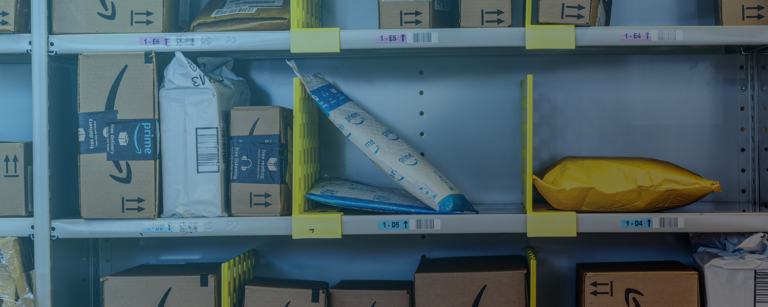E-commerce trends 2025 will fundamentally transform how businesses operate online. With technological advancements accelerating and consumer expectations evolving, staying ahead of these changes is no longer optional—it’s essential for survival. This comprehensive guide explores the eight most influential e-commerce trends 2025 that forward-thinking businesses are already implementing to secure their competitive edge.
Table of Contents
- 1. AI-Powered E-Commerce Experience
- 2. The Rapid Rise of Voice Commerce
- 3. Sustainability and Green Commerce
- 4. Omnichannel Retail as the New Standard
- 5. Subscription Models and Recurring Revenue
- 6. Hyper-Personalization Through Big Data
- 7. Augmented Reality Shopping Experiences
- 8. Cryptocurrency and Blockchain Integration
- Conclusion: Preparing Your Business for 2025
1. AI-Powered E-Commerce Experience
Artificial Intelligence has evolved from a futuristic concept to the driving force behind e-commerce trends 2025. While 62% of e-commerce businesses already implement basic AI solutions, the coming years will witness unprecedented adoption of more sophisticated AI technologies.
By 2025, AI will enable real-time personalized product recommendations that adapt instantly to customer behavior patterns. Leading retailers leveraging advanced AI recommendation engines report conversion increases of up to 320% compared to basic algorithms.
Additionally, conversational AI and advanced chatbots will manage increasingly complex customer interactions. These AI assistants will seamlessly handle everything from product inquiries to processing returns, bridging the gap between automated efficiency and personalized human-like interactions. According to McKinsey’s retail AI forecast, businesses implementing comprehensive AI solutions will see operating costs decrease by 28% while customer satisfaction scores improve by up to 35%.
2. The Rapid Rise of Voice Commerce
Voice commerce represents one of the fastest-growing e-commerce trends 2025. As smart speakers and voice assistants become household staples, voice-based shopping is projected to reach $80 billion in transaction value by 2025.
This shift demands a fundamental rethinking of product discovery. Consumers using voice search don’t scroll through pages of results—they typically act on the first option presented. This makes voice search optimization a critical competitive advantage.
To prepare for this voice-first future:
- Optimize product descriptions using natural language patterns
- Implement FAQ-structured content that answers common voice queries
- Create voice-specific purchasing paths that simplify transactions
- Test voice navigation across your entire customer journey
Brands that prioritize voice commerce will capture early-adopter market share in this rapidly expanding channel.
3. Sustainability and Green Commerce – A Growing Trend
By 2025, sustainability won’t just be a marketing angle—it will be a fundamental business requirement. The e-commerce trends 2025 heavily favor businesses with genuine environmental commitments, as 73% of global consumers now factor sustainability into their purchasing decisions.
Leading e-commerce platforms are implementing comprehensive sustainability initiatives:
- Carbon-neutral shipping options (with transparent emissions data)
- Plastic-free packaging innovations
- Blockchain-verified ethical supply chains
- Circular economy business models (trade-in, refurbish, resale)
Businesses that authentically embrace green commerce will build deeper customer loyalty while simultaneously reducing long-term operational costs. The intersection of environmental impact and business performance will become increasingly important among e-commerce trends 2025.
4. Omnichannel Retail Becomes the Standard
The distinction between online and offline commerce will effectively disappear by 2025. Seamless omnichannel experiences will be the baseline expectation, not a competitive advantage. This evolution represents one of the most transformative e-commerce trends 2025.
Advanced omnichannel strategies integrate:
- Unified inventory systems that provide real-time product availability across all channels
- Consistent pricing and promotions regardless of customer entry point
- Channel-agnostic loyalty programs that recognize customers across all touchpoints
- Cross-channel purchase journeys (start on Instagram, continue on website, complete in-store)
This omnichannel approach requires sophisticated backend integration and a single view of customer data. Businesses that master this complexity will deliver the frictionless experience modern consumers demand.
5. Subscription Models and Recurring Revenue
Subscription commerce will expand well beyond its current verticals by 2025, becoming a dominant business model across diverse product categories. This predictable revenue model continues to gain prominence among e-commerce trends 2025.
The subscription model is evolving in three distinct directions:
Replenishment Subscriptions
Automatic reordering of consumable products (beauty, household, food) with increasingly sophisticated prediction algorithms that adjust delivery timing based on actual usage patterns.
Curated Subscriptions
Personalized product collections with AI-driven customization that continuously refines selections based on customer feedback and preference data.
Access Subscriptions
Premium membership programs offering exclusive benefits, early access, and enhanced services that create „velvet rope“ experiences for loyal customers.
Businesses that implement flexible subscription options with strong value propositions will build stable revenue foundations while developing deeper customer relationships.
6. Hyper-Personalization Through Big Data
Personalization will reach unprecedented sophistication by 2025, with AI systems capable of synthesizing thousands of data points to create truly individualized experiences. This level of customization represents one of the most powerful e-commerce trends 2025.
Advanced personalization will extend far beyond product recommendations to include:
- Dynamic pricing based on individual customer value and purchase history
- Personalized website layouts that adapt to browsing patterns
- Custom product bundles tailored to complementary purchase history
- Individualized loyalty incentives based on specific customer motivations
According to our research, businesses that implement comprehensive personalization strategies see a 40% higher average order value and 50% higher customer lifetime value. The data infrastructure investments required for this level of personalization will deliver substantial ROI.
7. Augmented Reality Revolutionizes the Shopping Experience
AR technology will fundamentally transform online shopping by 2025, effectively eliminating the uncertainty that has historically limited e-commerce conversion rates. This immersive technology stands out among e-commerce trends 2025 for its ability to bridge the sensory gap between physical and digital shopping.
Advanced AR implementations will enable:
- „Virtual try-on“ for fashion items with accurate fabric physics and sizing
- Furniture and décor visualization in actual living spaces with lighting simulation
- Interactive product demonstrations that highlight features in context
- Virtual showrooms that replicate in-store browsing experiences
Retailers implementing comprehensive AR solutions report 94% higher conversion rates and 40% lower return rates for products with AR experiences. By 2025, AR capabilities will transition from novelty features to essential shopping tools.
8. Cryptocurrency and Blockchain in E-Commerce
By 2025, cryptocurrency payment options will become mainstream in e-commerce, with regulatory frameworks providing increased stability and consumer protection. This financial evolution represents one of the most technically significant e-commerce trends 2025.
Beyond simply accepting crypto payments, blockchain technology will transform multiple aspects of e-commerce:
- Transparent supply chain verification that proves authenticity and ethical sourcing
- Smart contracts that automatically execute complex order terms
- Decentralized customer loyalty programs with transferable benefits
- Fractional ownership models for high-value products
While implementation complexity remains high, businesses that establish cryptocurrency capabilities now will have mature systems in place as mainstream adoption accelerates.
Conclusion: Preparing Your Business for E-Commerce Trends 2025
The e-commerce trends 2025 outlined in this article represent both significant challenges and extraordinary opportunities. While technology continues to reshape online retail fundamentals, the underlying principle remains consistent: businesses that prioritize customer experience while embracing innovation will thrive.
To effectively prepare for these emerging trends:
- Assess your current technological capabilities against each trend
- Prioritize implementations based on your specific customer expectations
- Build modular systems that can adapt to rapidly evolving requirements
- Develop cross-functional teams that blend technical and customer experience expertise
The future of e-commerce belongs to businesses that can balance technological innovation with authentic human connection. Which of these e-commerce trends 2025 do you believe will have the greatest impact on your business? Share your thoughts in the comments below!






